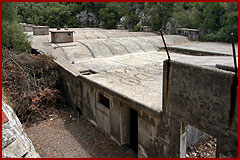| Willis' Magazine | |
|---|---|
| Part of Fortifications of Gibraltar | |
| Willis' Plateau, Gibraltar | |
 The outside | |
 Map of a portion of Willis's Plateau, including Princess Royal's Battery, Princess Anne's Battery, Princess Amelia's Battery and Willis' Magazine | |
| Site information | |
| Type | Magazine |
| Owner | Government of Gibraltar |
| Location | |
 | |
| Coordinates | 36°08′42″N5°20′49″W / 36.145054°N 5.346867°W |
Willis' Magazine is an 18th-century large magazine in the British Overseas Territory of Gibraltar. The magazine sits on a plateau with several artillery batteries.
